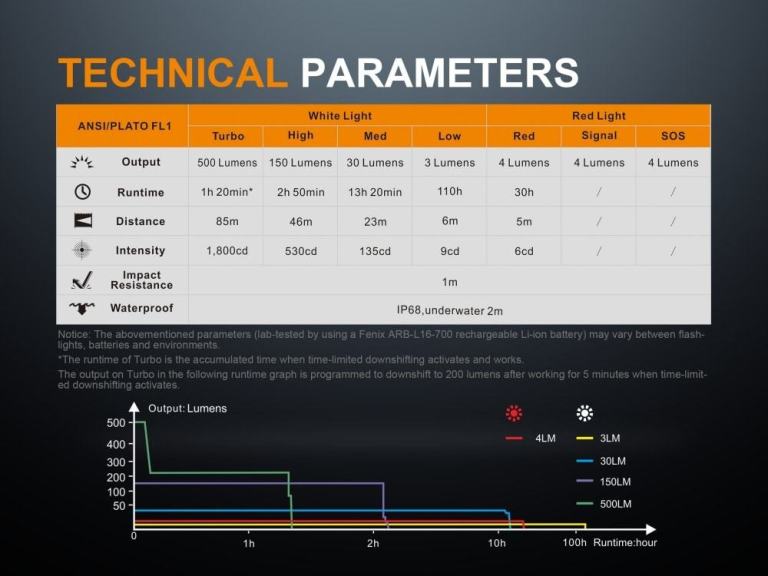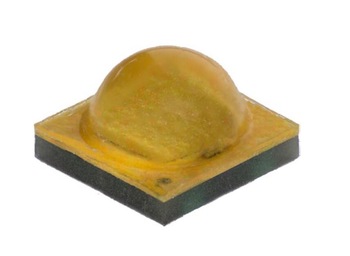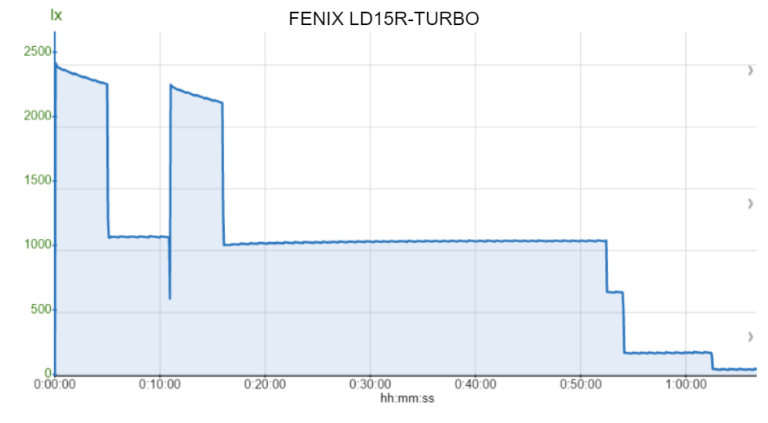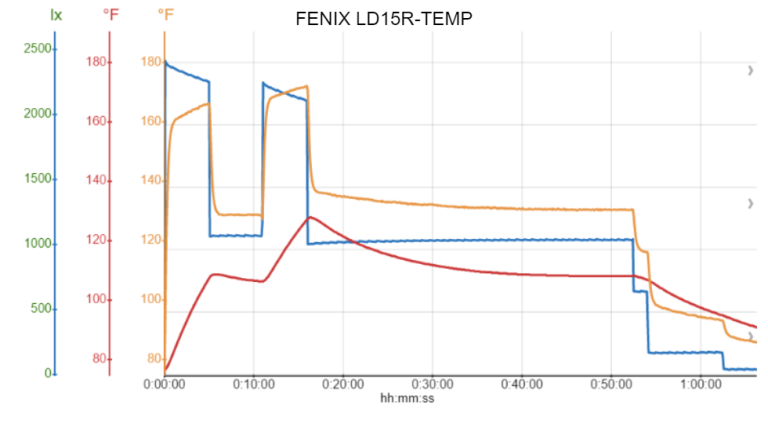Hi All, Fenix sent me the LD15R to test and I thought I'd share my thoughts here.
***
This is Fenix’s first 1xCR123A, L-shaped light specially designed for being multi-function and every-day-carry (EDC). This is very similar to their HM50R headlamp (which I’ve reviewed) which looks almost identical but is re-imagined and refined for EDC. Say hello to the LD15R!
Link to manufacture product page: https://www.fenix-store.com/fenix-ld15r-right-angled-rechargeable-led-flashlight/
OVERVIEW
Overall, I really like right angle lights and a plus of the 1xCR123A as a small EDC light for a “just-in-case” light. I love the color tint (4500K) and it’s wide and soft beam pattern as it works well for up close work. The clip and magnet tail allows you to still use the light hands-free if needed. Also the pointed corners on the HM50R have been rounded off so there are no sharp edges.
My other comments include: there is no white “defense” type strobe or SOS or ‘Flashing’ mode, you have to turn on the light into primary then you can shift into red light which might disrupt ‘night vision’, and that the pocket clip cannot be taken off or adjusted, ie you can’t rotate the light.
QUICK SPECS
Notice that the runtime specs below are for a rechargeable CR123A but Fenix does not mention if runtime for primary CR123A is the same or not.

FEATURES

OTHER DIMENSIONS
- Length: 2.76 inches (70mm)
- Body Diameter: 0.75 inches (19mm)
- Weight: 1.41 oz. (40 grams) excluding the battery and charging cable
INCLUDED
- 1 – LD15R
- 1 – Fenix ARB-L16-700 16340 Li-ion rechargeable battery
- 1 – Micro USB charging cable
- 1 – Spare rubber switch boot
- 1 – Holster (pouch)
- 1 – Spare o-ring
- 1 – User Manual (pdf)
- 1 – Warranty Card

OPTIONS
This is the only version, which would probably be considered neutral white.
PRICE
Current price is around $55 USD (see buy links at the very end of the review)
LOOK & FEEL
OUTSIDE
Overall, the body is very smooth and despite the small size of the light, there is a large tactile switch which is always a great feature in my books. The USB cover is held onto the light with a rubber ring so you can actually take that off if you want. However, the pocket clip appears to not be removable and does not want to rotate very much. There is a decent magnet in the tail cap which is another way to position the light.
INSIDE
There aren’t many moving parts but the tail cap holds on well be is also removed; additionally, the magnet helps hold and pull the battery out which is a neat byproduct of the mag tail cap. Down in the tube you can see the circle contact with 2 semi-circles around it which is likely the reverse polarity protection, which also means no flat-top cells will work in this light. With the included cell, there is a tiny bit of rattle if the light is shaken, perhaps a bit more spring tension is called for.
ACCESSORIES
The included netted pouch is a nice touch but doesn’t seem necessary for just carrying the USB cable along with you; this would have been better suited for the HM50R headlamp to keep the headband stored nicely.
OPTICS
LED SPECS
Uses the CREE XP-G3 led and Fenix states that is a 4500K temperature, a neutral bordering on warm tint.

BEAM PROFILE
Fenix does not advertise the angle of main LED but from what I’ve collected it seems to be a 80 total degrees spill with a stronger 40 total degree spot. The beam pattern is very smooth so there is not a very obvious spot.
The first rectangular graph is cut across the beam and helps a bit better to see what angle the spill starts at as usually it is quite a bit dimmer then the center. It’s quite possible that a very low lumen outer spill might not register using these methods. The percentage is a relative comparison to the brightest light recorded (generally, in the center).
The second, polar graph, is a simulation of the light along the beam.
Currently, these readings are strictly sensor recorded, and are not adjusted based on human perception of light but may be an interesting idea for the future.
TINT
The LD15R (left) is a bit warmer than the Nichia 219B (in the Nitecore MT06MD penlight) (center) then the related cooler HM50R on the right.
OUTPUT LEVELS
There are 4 different levels and seem to span the 500 lumen range ok.
Low->Mid->High->Turbo
OUTDOOR BEAMSHOTS
All the pictures below are taken with the light in TURBO.
POWER
BATTERY
It’s always nice to have a battery come with a light.
INDICATORS
The light has a battery indicator light which, when off, you can press and the light will either be green steady, green blinking, red steady, and ready blinking. The indicators also are used during USB charging, red for charging and green for complete. Overall, the indicators in the switch are a little dim, especially the green indicator.
CHARGING
Took about 2 hours to charge but seemed to trickle charge after that. Summing the charging current, the battery capacity calculates to about 750 mAh a little more than the 700 advertised but this test is by no means exhaustive and not really a 1C test.

PERFORMANCE
NOTES ON METHODS
I measured the light output in relative LUX and I have not spent time yet to calibrated for lumens or factored % of max output. The charts I’ve provided, while are literally quantitative, I suggest using as a qualitative reference for how the output may behave over time; typically lights aren’t left on this long and the max output can be reset. It’s worth to note that the runtime table provided by Nitecore states, “Runtime for TURBO [and] HIGH is calculated based on theoretical arithmetic.” so there isn’t physically reproducible in my tests.
PWM check using a 50 millisecond test period with a sampling rate of 3,000 times per second.
Temperature measurement condition is at room temp and currently no fan cooling.
I am still very new at doing these types of measurements so I am no authority on on this subject, but please let me know if things don’t look right or you see anything that I could do to improve for next time.
BATTERIES USED FOR TEST
The included battery was used during the tests. Make sure that you carefully research any cell you are considering using before purchasing.
RUNTIMES
5 min turbo, with about a 1 hr runtime with 1 additional turbo reset.

PWM CHECK
There appears to be no significant PWM on any constant mode. For comparison, the second graph shows PWM varying from 0 to 120 lx on the LOW mode on the Nitecore R25 flashlight.
STROBES
There is no strobe.
FLASHING/BEACON
Frequency is 1 flash every second, with the flash lasting about 1 second.

TEMPERATURE
Without resetting turbo, the max body temp would have been 109°F with and out the front temp of 166°F (measured right at the surface of the glass lens). With one turbo reset the body temp rose to 128°F likely too hot to handle. Looks like there isn’t a temperature sensor regulating output and that it’s a timed step-down approach. The graph below shows the relative output on the blue line along with the temps I measured; the orange line is the temp right in front of the lens, and the red line is the outside body temp near the head.

USER INTERFACE
The UI is pretty straight forward and has mode memory but suffers from not having shortcut to low and that you have to turn the light on in primary before having to switch to red, this sort of defeats preserving night vision. Also, the battery indicator is a little dim, and a little confusing as it’s hard to remember if constant is better than flashing, but as a side note, color blind folks may get even more confused with red vs green. As a plus, you can lockout the light by slightly unscrewing the tail cap. Summary and other thoughts:
- Can’t go straight to red from off
- Primary strobe is lacking or even regular beacon or sos
- The red ‘flash’ is a very polite 1 second on then 1 second off blink
- Has SOS in red? I guess this would only make sense if you broke down on the road and didn’t want to shine a white SOS at oncoming traffic, other than that, not sure what you’d do with that.
COMPARISONS
As mentioned throughout this review, the LD15R almost looks identical to the HM50R but by now you know they are different.
CONCLUSIONS
HIGHLIGHTS
- Great tint and beam pattern
- Small and versatile design
- Magnetic tail cap and pocket clip for attachment
- USB charging and comes with a battery
- Not just a repackage of the HM50R
COMMENTS
- There is no white strobe
- Have to turn on white light before the red light
- Spring could use a little more tension
PURCHASE
The current price for the light is about $55 USD and if you appreciated my review and would like to support me, feel free to check out this product on amazon using my affiliate link (does not cost you more, amazon gives me very small % of their profit):
Amazon Link: Fenix LD15R 500 Lumen Right-Angle White & Red LED Rechargeable Mini Flashlight
NOTES
Disclaimers:
- CivilGear Reviews received this product for testing and providing an honest review.
- CivilGear Reviews was not paid for writing this review.
- CivilGear Reviews is a participant in the Amazon Services LLC Associates Program, an affiliate advertising program designed to provide a means for sites to earn advertising fees by advertising and linking to amazon.com












































